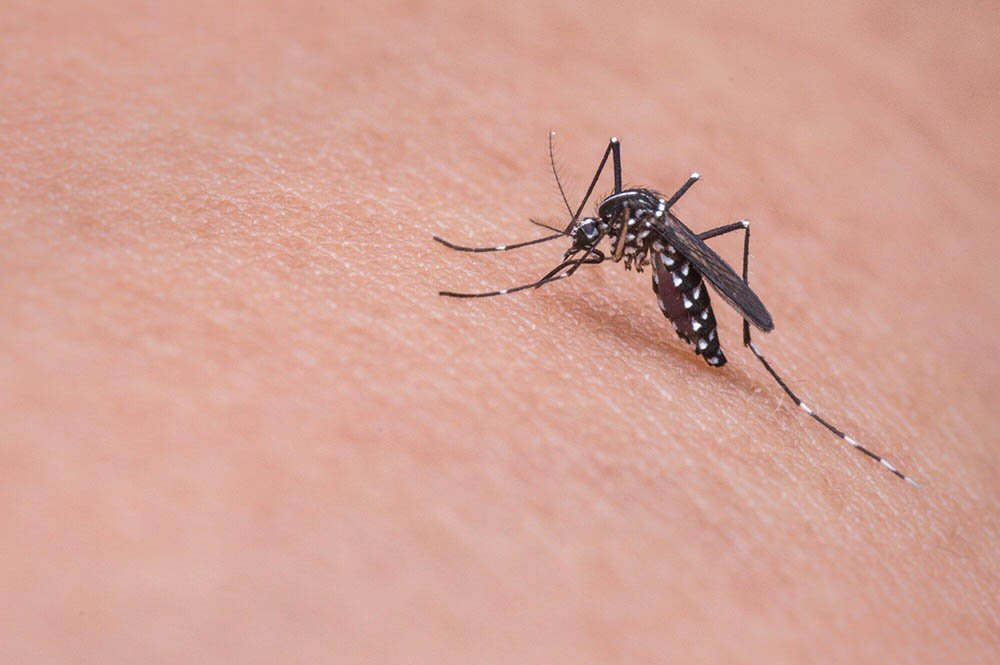Your child’s laughter rings out as they dash across the lawn, chasing playmates in the warmth of the setting sun. This is the picture of childhood joy.
But, hidden in the grass lurk tiny threats. They could turn this perfect scene into a parent’s nightmare.
Understandably, the health of one small child is a top priority. But, are you truly aware of the risks from a harmless mosquito buzz or a tick in the undergrowth? Here are the top seven hidden dangers of insect bites that shouldn’t be overlooked.
Stealthy Lyme Disease: The Tick’s Secret Weapon
Mosquitoes are notorious for their annoying bites, but ticks are the true silent threats in the insect world. These small, often unnoticed creatures are capable of transmitting Lyme disease. This disease is a growing health concern worldwide.
Lyme disease can start with symptoms easy to overlook, like the bull’s eye rash. But not everyone infected will show this sign.
The impact of Lyme disease is significant. It can begin with mild flu-like symptoms but can progress to severe joint pain, heart issues, and facial palsy if not treated early.
These complications can severely affect one’s quality of life. This highlights the importance of early detection and prevention.
To guard against Lyme disease, it’s crucial to check for ticks after spending time in grassy or wooded areas. Involving children in these checks during outdoor play can significantly reduce the risk. Using repellents and wearing protective clothing are also essential in preventing tick bites.
EEE – The Hidden Danger Lurking in Mosquitoes
Eastern Equine Encephalitis (EEE) is not as well-known as Zika or West Nile virus. But it poses a severe risk, particularly to young children and the elderly.
Symptoms often start with what seems like a fever or flu, including:
- high fever
- chills
- body aches
But it can quickly become more serious, leading to brain inflammation, altered mental states, seizures, and can even be fatal. With no specific treatment for EEE, prevention is crucial. This involves effective mosquito control practices such as:
- eliminating standing water
- using insect repellent
- making play areas mosquito-free
Protecting from this serious threat means being vigilant. You should be taking proactive steps to avoid mosquito bites and the diseases they carry.
Anaplasmosis and Ehrlichiosis – The Underestimated Tick-Borne Fevers
Lyme disease gets a lot of attention. Other tick-borne diseases like anaplasmosis and ehrlichiosis are equally threatening but less known. They are spread by the black-legged or deer tick.
These diseases cause flu-like symptoms that can be debilitating, such as:
- fever
- severe headaches
- muscle aches
While not usually fatal, anaplasmosis and ehrlichiosis can lead to serious complications, especially in those with existing health conditions. Their symptoms can easily be mistaken for the flu, making awareness and accurate diagnosis crucial.
To protect against these diseases, wear protective clothing in tick-prone areas. Use repellents and check for ticks after being outdoors.
Early detection and treatment are vital to avoid long-term health problems. Public education on tick-borne diseases and prevention is key to public health.
The Zika Virus – The New Age Mosquito Threat
The Zika virus continues to be a significant health threat, known for its impact on pregnancies and risk of severe birth defects. Beyond prenatal concerns, Zika is linked with Guillain-Barré syndrome. It is a serious neurological condition leading to paralysis.
Despite less international travel, the threat from this mosquito-borne virus persists. Vigilance is crucial, especially in regions with the Aedes mosquito, Zika’s main carrier.
While cases have decreased, local transmission still occurs. This highlights the need for ongoing public health efforts to fight Zika and protect vulnerable groups.
Rocky Mountain Spotted Fever – A Global Concern
Contrary to what its name might suggest, Rocky Mountain Spotted Fever is not confined to the Rocky Mountains. It is a global threat, transmitted by Rocky Mountain wood ticks and dog ticks. Classic symptoms include:
- fever
- headache
- rash
These symptoms may progress to complications like blood clotting and skin necrosis if untreated. This shows the need for early detection and treatment with the right antibiotics. It stresses the importance of tick awareness and educating parents.
Severe Dengue – The Ultimate Test of Mosquito Control
Most people recover from classical dengue fever without severe complications. But, in some cases, the disease can become life-threatening.
This severe form is marked by alarming symptoms, such as:
- sudden plasma leakage
- fluid accumulation
- respiratory distress
- severe bleeding
It may also lead to organ damage affecting the liver, heart, and other vital organs.
Dengue hemorrhagic fever, a particularly severe variant, leads to significant bleeding. It is a drop in platelets crucial for clotting. It causes plasma to leak into tissues and requires immediate medical help.
Severe symptoms usually appear after the initial phase of the illness, which might seem to be improving. Knowing the symptoms, especially in dengue-prone areas, is key.
It’s critical to monitor health after a mosquito bite that could transmit dengue fever. Seek immediate medical help if severe symptoms develop. Early detection and treatment significantly improve outcomes for those with severe dengue.
A Potpourri of Other Pests: Beyond the Known Threats
Beyond the more recognized diseases are a host of lesser-known yet potentially harmful infections. Such as Bourbon Virus, La Crosse Encephalitis, and others, lurking in the shadows. While these diseases are rarer, they can still pose a considerable risk to your child’s health.
Prevention is key to risk management. Strategies include:
- using insect repellent
- wearing appropriate clothing
- pest control
Professional measures, like those performed by experts such as this Cape Cod pest control, are effective defenses against these hidden dangers.
Safeguarding One Small Child Against Unseen Threats
Knowledge is power, and in the case of vector-borne diseases, it is your child’s first line of defense. By understanding these dangers, you’re one step closer to ensuring your little one’s explorations are joyful.
Simple precautions can enhance the outdoor experiences of one small child. Dress in light clothes, apply EPA-approved repellents, and check for ticks. A small practice adjustment that offers peace of mind as they play and thrive.
Remember, no detail is too small for your child’s safety.
Discover insights & tips for your family’s safety & health. Check out our blog for articles on topics that matter to you. Stay informed & protected.
















